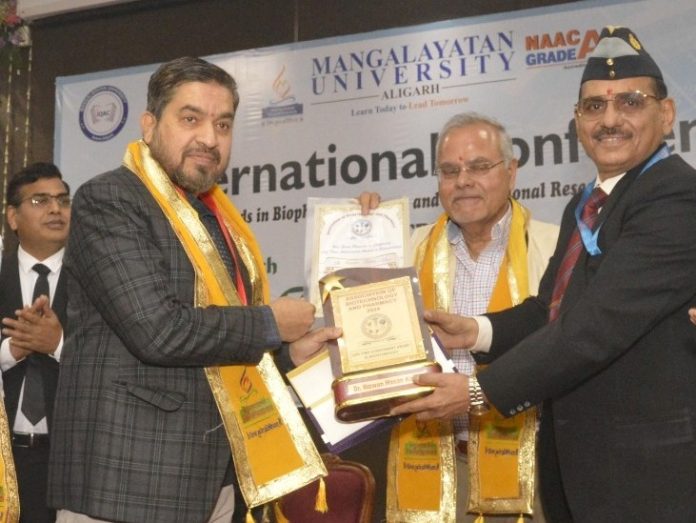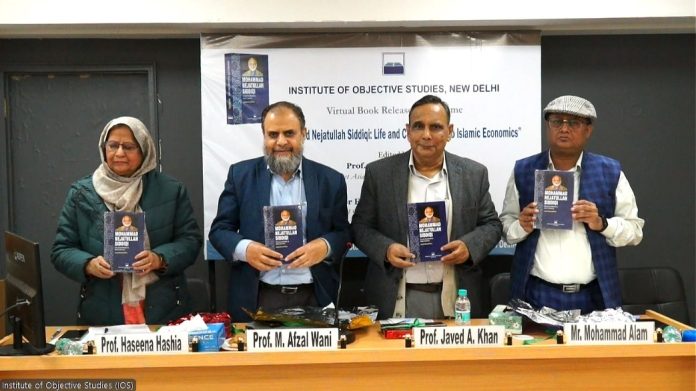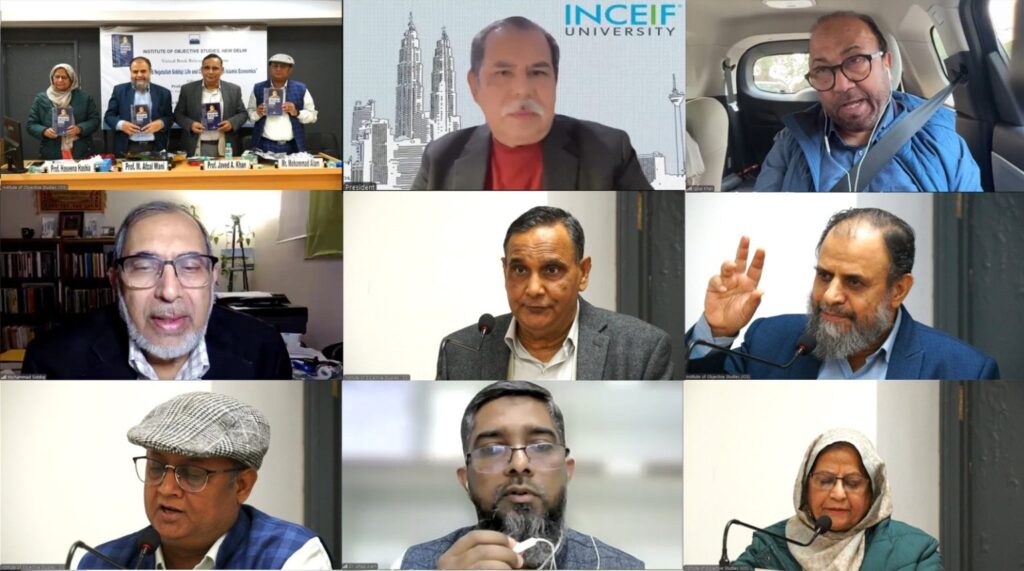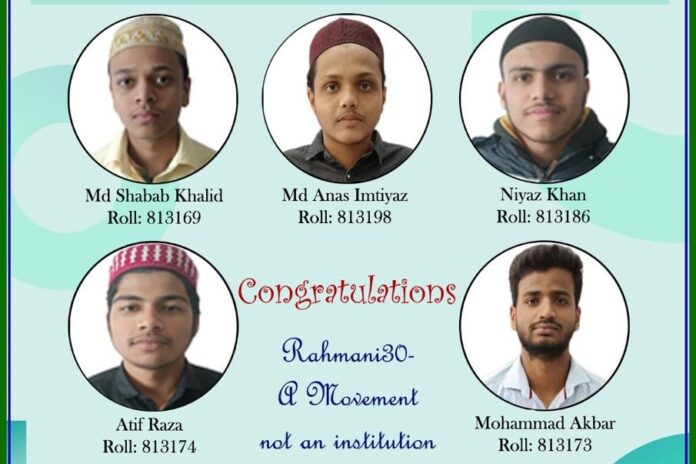Mysuru, KARNATAKA :
March 08th, 2013
Muezzin (mosque official) Yunus Baig as a witness stated in the above mentioned case that in those days his monthly pay was just two-and-a-half rupees and that of the Peshimam (leader of the congregation) used to be four rupees. Gradually that amount was increased to five and eight rupees respectively. The monthly expenditure of the mosque did not exceed thirty-five rupees. For Prophet’s birthday and Shab-e-Qadar during, Ramzan the expenditure would be thirty rupees. The total annual expenditure would be Rs. 490.
Much later it went up to Rs. 730. Every Thursday there used to be feeding of about four to five people for which one rupee used to be spent. Travellers visiting the mosque were always treated as guests. During the first ten days of Muharram, food used to be supplied for ten to twelve persons. In the month of Ramzan, the staff of the mosque and some five or six well-known people of the locality would be presented with shawls.
Another witness whose statement was recorded was Mohammed Jaffer, Superintendent of Police. He was the President of the Muslim Rifah-ul-Muslimeen. This organisation was founded in the year 1907. Abdul Fateh was paying a monthly subscription of ten rupees to that organisation till 1913. His two brothers Tajuddin and Badruddin were contributing two rupees and half-a-rupee respectively. Tajuddin had also given initially a one-time duration of a hundred rupees. That organisation is still existing and it is looking after an orphanage for girls known as Phulwari and another for boys called Apna Ghar.
The second Muthavalli of the mosque Abdul Fateh was a man of great reputation. He was a famous builder of his time. He had constructed some of the important government buildings. He was also considered to be a dedicated agriculturist and in appreciation of his services to farming at Taripura Village near Mahadevapura in Srirangapatna Taluk, he was awarded a medallion by Maharaja Chamarajendra Wadiyar Bahadur at Mysore Agriculture and Industrial Exhibition held in 1888.
After the demise of Abdul Fateh, his brother Tajuddin became the Muthavalli of the mosque but on account of his indifferent health he died in 1916. He was succeeded by his youngest brother Badruddin who enjoyed the title of Muthavalli for the longest period in the history of the mosque. When he died in 1942, Gulam Ahmed, son of Abdul Wahab, shouldered the responsibility but he too passed away soon.
One common feature in the case of all the above Muthavallies was that none among them thought of exploiting the mosque properties suitably. All that they did was just to receive the rents and spend them.
It was only Abdul Sattar Khan Durrani, son of Abdul Fateh (who succeeded Ahmed Khan), who rendered truly memorable service as a Muthavalli of the mosque. During his tenure, he got demolished all the old dilapidated shops and houses with country-tiled roofs opposite the present day Shree Nagaraj Talkies in Benki Nawab Street and rebuilt at his own expense thirteen new shops and behind them seven tenements for people with low income. In the same street almost in front of the mosque, the front portion of an existing house was converted into five shops and four houses were added in the rear portion. With the increased revenue accruing from these properties, he could increase the emoluments of the well-deserved staff of the mosque.
As time passed on, there was a constant increase among the members of the congregation. Therefore Abdul Sattar shifted the houz (open water tank for ablution) from the front yard to the southern side. Then an additional roof was added to the open space, thus providing greater accommodation to the faithful.
Another notable act performed by him was to get Omer Khan Mosque and its properties registered with the Mysore State Board of Wakfs as per Gazette Notification No. M.W.B. 19 (2) 1965. And the greatest of his acts was to perform Haj first on his own behalf and then on behalf of his father and mother respectively.
The devout and dutiful Haji Abdul Sattar passed away on Nov. 30, 1983. A new Muthavalli had to be appointed to fill the vacancy. Syed Abdul Rehman, ex-MLC, was the Chairman of Mysore District Wakf Committee at that time and he was invited to give proper guidance to the family. He formed an Advisory Committee consisting of the senior members of the family to run the Trust and the Committee appointed Tajuddin II, grandson of Tajuddin I. But unfortunately the new incumbent could not continue because of his personal problems. However, his younger brother Amir Amanulla was appointed in his place and he served the mosque for a period of 23 years.
Since a need arose to expand the mosque to accommodate the ever-growing congregation, Amir Amanulla utilised the spacious backyard for the extension of the prayer hall. Under his personal supervision, the new structure came up in record time for which he deserves kudos. He also converted the road facing rooms in the front side of the mosque into shops which supplemented the revenue to a large extent.
Amir Amanulla was the second Muthavalli after Abdul Sattar who rendered sincere service worthy of emulation. However, he had to relinquish his office in 2008 since he had to shift to Bangalore. The next Muthavalli appointed by the committee was Fida Mohammed, the great-grandson of Abdul Wahab, who after a period of four years, realised that he was not doing justice to his Muthavalliship and resigned on June 15, 2012.
The Committee decided that yours truly should be the next Muthavalli. In spite of my age, having one foot in the grave, I accepted the offer without any reluctance since I have always believed in Tennyson’s Ulysses that before the eternal silence something more could be done by me though made weak by time and fate but strong in will to strive, to seek, to find and not to yield. And so within three months, by the grace of Allah, I have succeeded in prevailing upon the tenants, who were giving an apology of a rent, to increase it four-fold. For the last thirty years, no Muthavalli had ever seriously tried to get the rents revised.
The houz or the water tank was completely exposed to the sun but now a new shelter is put up to provide sufficient shade for those performing ablution.
The task of increasing the rental value of the mosque properties was made easier by the unstinting support and co-operation extended to me by the young members of the Committee who seem to have been galvanised into collective action and who appear to have realised:
How dull it is to pause, to make an end,
To rust unburnished, not to shine in use !
As though to breathe were life.
I fondly hope that they will continue to evince greater interest in realising the dream of their patriarch to render maximum acts of charity through the Trust created by him.
______________
March 13th, 2013
Recollections of Ancestors and their Progeny.
He came, he saw and he fell in love. Yes — he fell in love! Nothing surprising in that at all; he was an exuberant young man. But the object of his love was not a ravishing damsel; it was something which he had least expected. It was a city — the city of a benevolent Maharaja, the city of a salubrious climate and the city of most hospitable people. Where else would he find a place like that ! For him, Mysore was just as Kashmir was to the then Moghul ruler of India. On his first visit to Kashmir, Jehangir is reported to have said in Persian:
“Agar Firdaus bar rooye zamee asth Hamee astho, hamee astho, hamee asth” (If there be a paradise on Earth, then, it is this; it is this; it is this !)
Mysore in those good old days was a place of verdant gardens and lakes every where, with the beautiful eye-catching Chamundi Hill in the background. What if there were no canals and gondola-like shikaras with the oarsman and houseboats. It was almost like his own Kandahar but with a tranquil atmosphere and with no fear of any marauding gangs of armed looters or invading armies or East India Company, targeting his homeland. Here was a man who felt even in his veins the fear of lurking devastation and chaos which seemed to be the lot of his country. So Mysore was the ideal place for a peace-loving person to settle in and so he decided to make it his home.
And that was Mohammed Omer Khan Durrani, a Pathan from Afghanistan, who had migrated from Kandahar, his native place, and after wandering throughout India, finally reached the picturesque Mysore where he was welcomed with open arms by the local residents on account of his straight-forward simplicity and unquestionable integrity and for the beautiful merchandise he was dealing in, in the form of Benarasi textiles.
It was in the early half of the nineteenth century that this young man had arrived as a travelling salesman. He was fortunate enough to have been patronised by the royal family of Mysore when Sri Chamaraja Wadiyar X was the Maharaja of Mysore.
Though appearing initially to be an uncouth spunky Pathan, he won the hearts and trust of his customers so much by his piety and honesty that they introduced him to their other affluent friends and relatives. Soon, along with his textile business he started accepting contracts as a reliable builder. As his business activities expanded, he felt the need to get his brothers from Kandahar to support him and to share his growing prosperity. The two brothers who joined him were Mohammed Usman and Mohammed Zaman (sharing the same surnames Khan and Durrani, hereafter deliberately omitted).
Mohammed Omer was a man with the Midas touch. Whatever he attempted, he was crowned with success. He didn’t pursue wealth but wealth seemed to follow him. He made a name for himself and he was on a roll and he couldn’t see anything going wrong. He thrived so very well that he started buying one property after another including lands in Srirangapatna Taluk and residential houses in Mysore city.
He had married thrice. By the first two wives he had three sons and five daughters and by his third wife he had his youngest son. All his daughters were sent to Kandahar for their marriages. The sons also brought their wives from their ancestors’ land. His youngest son married a girl from Mysore.
After giving their respective shares in his property to his sons, Omer decided to go on pilgrimage to Mecca and at the same time he wanted to construct a mosque at Benki Nawab street in Mandi Mohalla. As the news about his intention to build a mosque spread in the locality, a local Nawab voluntarily offered a plot of land in the same street. The Nawab’s only wish was that after the demise of his daughter and himself, both of them should be buried in a corner of that site. Omer thankfully accepted the offer along with the aforementioned stipulation. And even to this day the two graves are there in the southern corner of the mosque where after every Eid prayer, the entire congregation offers special prayers for their salvation and higher rewards in the hereafter.
Before his departure to Mecca along with his brother Usman, Omer handed over all his goods and chattels along with hard cash to his youngest brother Zaman for safe-keeping and for the family requirements, and authorised him to proceed with the construction of the mosque for which he promised to send from Mumbai four beautifully carved rosewood columns and three matching arches with floral designs for enhancing the interior beauty of the prayer hall. And after reaching Mumbai, he sent those columns and arches as per his promise.
After performing the Haj, when Haji Omer along with Haji Usman returned to Mysore, he was shocked to see that no mosque had been built on the donated site but there was a palatial house on the adjoining site and that house belonged to Mohammed Zaman who had passed away during the absence of the two brothers.
When they entered the newly-built house they saw to their chagrin that the rosewood pillars and arches had been used in the construction of the drawing room. It was a clear case of betrayal of the trust reposed by the elder brother in the younger one. It was an indictable offence. Omer’s second son Abdul Fatheh, who had accompanied his father, commented that what his uncle had done was grossly inappropriate and highly condemnable. Haji Omer admonished his son gently for having criticised a departed person but at the same time he predicted that one day in the future, God willing, it would become Abdul Fatheh’s property and so it turned out to be a prophecy.
Abdul Raheem, son of Zaman, got into financial straits owing to his dolce vita and squandering nature and had to sell his house which was bought by Abdul Fatheh whose descendants are residing even to this day in that nearly one-hundred-and-fifty-year-old relic.
Haji Omer in the presence of his brother Haji Usman and nephew Abdul Raheem, son of Zaman, acknowledged in writing that he had received back all the remaining cash and other articles which he had given in trust to his brother, Zaman. It was further stated that no one from among his sons should claim anything more from Abdul Raheem. He did not want them to enter into any kind of litigation in the future in this regard.
Haji Omer was a far-sighted patriarch. Without any formal education, this Pathan was a practical, down-to-earth man. He had great intelligence and knowledge of human nature, therefore he tried to pre-empt his progeny from becoming litigious. Even when he made his will he advised his sons to refrain from going to courts of law for any real or imaginary misappropriation or embezzlement in the management of mosque’s funds or properties; they would be answerable only to God.
And finally Haji Omer got busy with the construction of mosque and completed the same in the year 1883. For the future expenses of the mosque, he donated several houses and wetlands but those lands came under the purview of The Karnataka Land Reforms Act, 1961 since they were tenanted lands. However, the rental income from the shops and residential properties was sufficient to meet the mosque expenses and other charities at that time.
Haji Omer, the God-fearing man, died in the year 1890 leaving behind four sons who were to act as Muthavallies (managers) of the mosque, one after another, as per their seniority. Abdul Wahab, the eldest son, took the management of the mosque after the demise of his father and he too died in the year 1901. Then his brother, Abdul Fateh became the Muthavalli and he passed away in 1913. Then the third son, Mohammed Tajuddin took charge of the mosque. During his tenure he filed a case on Dec. 10, 1915 against Abdul Sattar, the teenaged son and other heirs of Abdul Fateh before the Subordinate Judge of Mysore in O.S 350/1915-16 accusing Abdul Fateh of having embezzled the mosque funds by not keeping proper accounts and pleading for the recovery of Rs. 3,857 from the assets of the deceased Muthavalli. The learned Judge, however, directed that a decree be drawn up in favour of the plaintiff for the recovery Rs. 184 only.
Aggrieved by the above order, the plaintiff approached the Chief Court of Mysore at Bangalore against the said order in R.A. No. 31 of 1917-18 and that appeal was dismissed with costs.
This particular litigation which took place on account of personal malice and malfeasance, will be of least interest to either the readers or the descendants of Haji Omer. But on accounts of the proceedings of the above case sufficient light is thrown upon the prevailing socio-economic status of the people of Mysore in the early years of the twentieth century.
by: Professor MIK Durrani
source: http://www.facebook.com / Professor MIK Durrani (written in segments from March 08th to March 13th, 2013





















